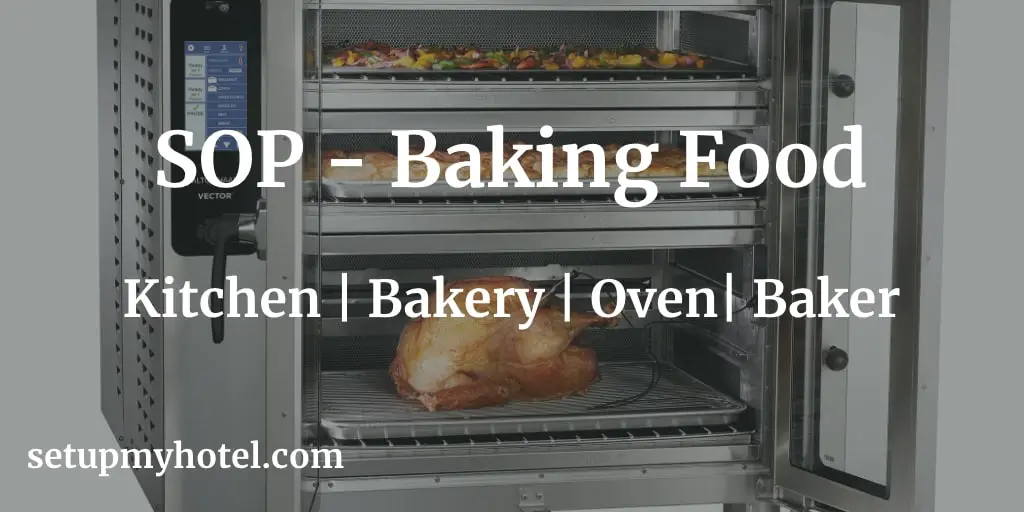Baking Food In The Hotel Kitchen
To ensure consistency and quality in the production of baked goods, it is important to have a standard operating procedure (SOP) in place for the kitchen or food and beverage (F&B) production team.
The SOP should outline the specific steps and procedures that need to be followed for each recipe, including ingredient preparation, mixing, baking, cooling, and storage. It should also include guidelines for maintaining hygiene and cleanliness in the kitchen, such as regular cleaning of equipment and surfaces.
In addition, the SOP should provide detailed instructions for measuring ingredients accurately, monitoring baking times and temperatures, and ensuring that the final product meets the desired specifications for taste, texture, and appearance.
Every chef should understand what is the baking process and how it is done. Baking is the cooking of foods in dry enclosed heat, without adding a frying medium.
By following a well-planned SOP, the kitchen or F&B production team can ensure that their baked goods are consistently delicious and of high quality. This can help to build a reputation for excellence and increase customer satisfaction and loyalty.
The Sous Chef and Head baker is responsible for ensuring that the correct baking method is used. The hotel training and HRD department should develop and implement proper written Kitchen SOP’s to ensure the same is implemented correctly throughout all the food preparation outlets.
Baking Food Standard Procedures:
- SetSet: Allowing an item to go from a soft or liquid state to a firmer more solid state. heat regularly at the desired temperature.
- Place food on a greased sheet or rack or use moulds in the oven without adding either fat or liquid.
- BakeBake / Baking - To cook food by surrounding it with hot dry air. similar to roasting; the term bakin... to the desired degree of doneness’ by increasing or decreasing heat as required in the recipe.
- It may also be used for drying at lower temperatures.
- For potatoes, pasta dishes, desserts, pastries, tarts, pies, cakes, fish, ham, breads, and sponges.
- A convection oven may also be used for baking the above.
- Fans force heated air into the oven cavity for more rapid baking.
- A slightly higher temperature is required in a convection oven than in a conventional oven.
- Foods that are to be regenerated should be covered properly.
- Most of the baked foods can also be cooked in a convection air, except for those where strong air will result in poor product quality (such as sponges, cakes, etc.)
Training Summary questions:
Q1. What is the purpose of this SOP?
Q2. Who is responsible to check and monitor the Baked foods?
Q3. What types of foods can be cooked in a convection oven?
Q4. Why baked food like sponges should not be cooked in a convection oven?
Q5. Why should the food items be kept on a greased sheet or baking paper?
Patreon Only SOP Download
SOP Number: Kitchen / F&B Production SOP – 15 Department: Kitchen / Food Production - Baking Date Issued: 28-Nov-2018 Time to Train: 20 Minutes












